Routes to longing with Hsi-Nong Huang
Experimental essay by Cecilia Vilela, commissioned by New Art Projects
Hsi-Nong Huang: Ships Passing, 4 May–13 July 2024, London, UK
Hsi-Nong Huang: Ships Passing, 4 May–13 July 2024, London, UK
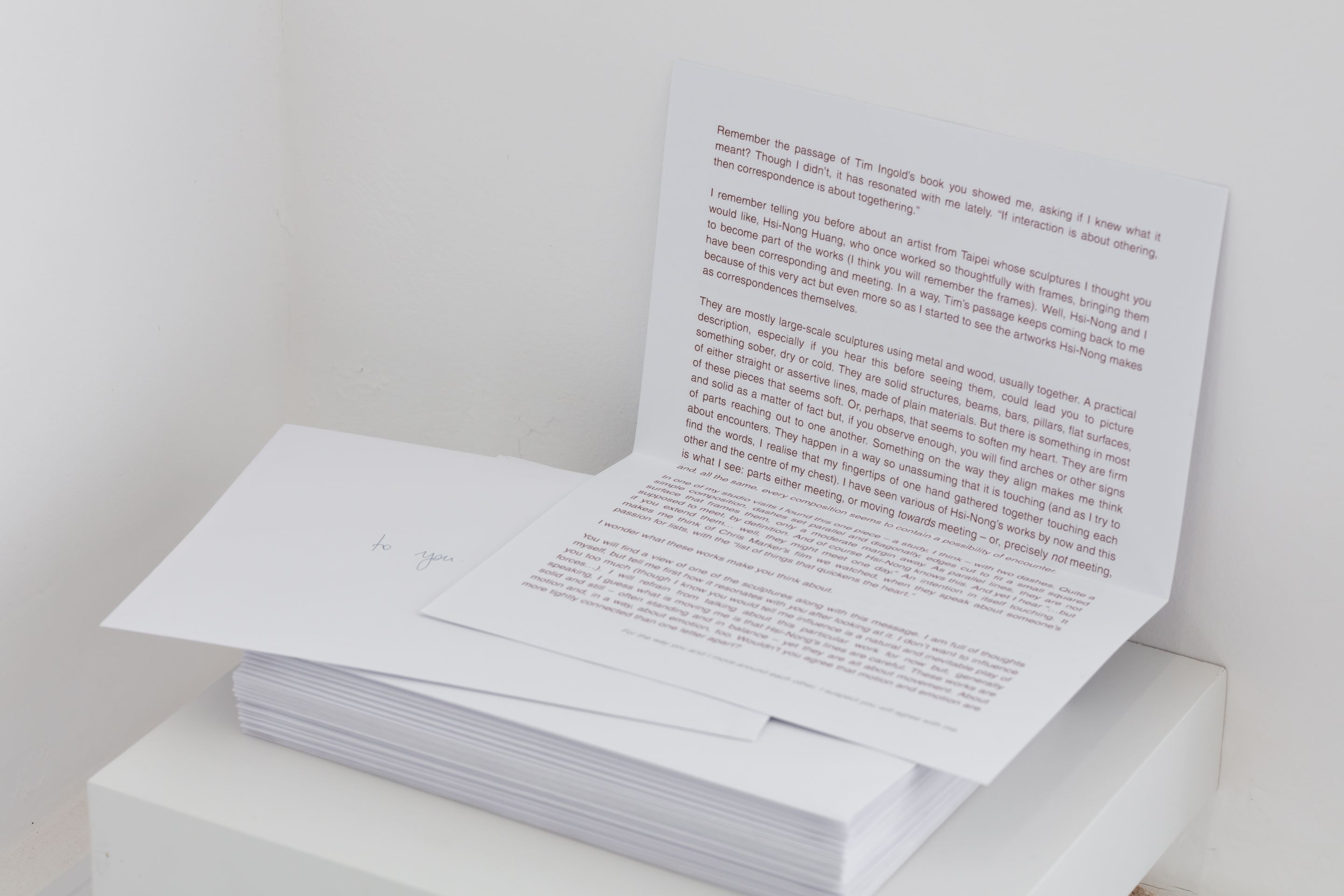
Remember the passage of Tim Ingold’s book you showed me, asking if I knew what it meant? Though I didn’t, it has resonated with me lately. “If interaction is about othering, then correspondence is about togethering.”
I remember telling you before about an artist from Taipei whose sculptures I thought you would like, Hsi-Nong Huang, who once worked so thoughtfully with frames, bringing them to become part of the works (I think you will remember the frames). Well, Hsi-Nong and I have been corresponding and meeting. In a way, Tim’s passage keeps coming back to me because of this very act but even more so as I started to see the artworks Hsi-Nong makes as correspondences themselves.
They are mostly large-scale sculptures using metal and wood, usually together. A practical description, especially if you hear this before seeing them, could lead you to picture something sober, dry or cold. They are solid structures, beams, bars, pillars, flat surfaces, of either straight or assertive lines, made of plain materials. But there is something in most of these pieces that seems soft. Or, perhaps, that seems to soften my heart. They are firm and solid as a matter of fact but, if you observe enough, you will find arches or other signs of parts reaching out to one another. Something on the way they align makes me think about encounters. They happen in a way so unassuming that it is touching (and as I try to find the words, I realise that my fingertips of one hand gathered together touching each other and the centre of my chest). I have seen various of Hsi-Nong’s works by now and this is what I see: parts either meeting, or moving towards meeting – or, precisely not meeting, and, all the same, every composition seems to contain a possibility of encounter.
In one of my studio visits I found this one piece – a study, I think – with two dashes. Quite a simple composition, dashes set parallel and diagonally, edges cut to fit a small squared surface that frames them, only a moderate margin away. As parallel lines, they are not supposed to meet, by definition. And of course Hsi-Nong knows this. And yet I hear “…but if you extend them… well, they might meet one day.” An intention in itself touching. It makes me think of Chris Marker’s film we watched, when they speak about someone’s passion for lists, with the “list of things that quickens the heart.”
I wonder what these works make you think about.
You will find a view of one of the sculptures along with this message. I am full of thoughts myself, but tell me first how it resonates with you after looking at it. I don’t want to influence you too much (though I know you would tell me influence is a natural and inevitable play of forces…). I will refrain from talking about this particular work for now but, generally speaking, I guess what is moving me is that Hsi-Nong's lines are careful. These works are solid and still – often standing and in balance – yet they are all about movement. About motion and, in a way, about emotion, too. Wouldn’t you agree that motion and emotion are more tightly connected than one letter apart?
For the way you and I move around each other, I suspect you will agree with me.
These sculptures and drawings feel assertive and their easy curves and smooth angles keep me wondering if they are achieved by flexibility or by precision. Is it a calculation that leaves room for chance, or one that leaves no room for doubt?
There are some predictable associations that the combination of wood and metal may lead to: porosity and impermeability, natural and industrial. In my recent correspondence with Hsi-Nong, we spoke about family and I started to see family too in these sculptures, though not in any obvious way. I am thinking about a negotiation between tradition and movement, between openness and care (despite none of these being obvious dichotomies), and about various notions of future. As if these shapes are in a dance with the future. Maybe that is it: I look and see tradition in these works, but in a dance with something much, much lighter (and please excuse however uninventive of me it might be to speak of lightness and weight, but this is where my mind goes, in a way). I do often feel that family, whether its light presence or heavy absence, is a bigger influence than ever announced by anyone. The negotiations these works embody, between embraces and misencounters, could not come from emotions of any other nature, I feel.
By the way, do you remember that poem I shared with you right before the New Year, about water? Something in Hsi-Nong’s works brings me to those words too. I think they share a similar attention to movement, the tide that comes and goes. Sculptures, drawings, and the most mechanical of installations can also carry a little bit of sea in them.
On the note of moving waters, Tim Ingold keeps returning to my mind (like a tide?) because that notion of correspondence is explained through the metaphor of a river flow. It is like this: through the visualisation of river banks, we can speak about one bank in relation to the other or eventually cross a bridge to find oneself “halfway between the two” – to borrow Tim’s own words. The river, instead, and perpendicular to the bridge, constantly touches and shapes both banks, with its flow. In this sense, correspondence calls for a shift in orientation, from what happens between – that and some other – to what happens along – them. So, to think of relations of beings, or things, as in correspondence would be “to align our awareness with the waters.”
It makes me think of each part of an encounter, long or brief, as being in constant formation and transformation by their very exchange. Just as wood is sometimes scarred by something that has weighed heavily on it, scratched forever by a sudden movement, or weathered gradually by the contact with even the most delicate light.
Hsi-Nong is really into blue and, though your case is different, you both seem to have a very particular relationship with colour. In our correspondences I saw miniatures of earlier works. Can you believe they used to be colourful? In this case, training seems to have moved everything farther away from colour. But you will see the work is so round without much of it. I say much as the silver of the metals, and the browns and beiges of the wood are, of course, colour, however neutral we may perceive them (some things I learned from you on looking at colour, you see).
Hsi-Nong is working on a new exhibition that will be called Ships Passing. It mentions ships but I suspect it is about the sea. The other day my mother spoke about this idea that the waters of a river never cross the same place twice – a recurrent thought, she says. It might well be the same for ships, I think. They move around, come and go, pass by, and might even share itineraries or cross routes. Their journeys and encounters, however, are not the same ever again, each molecule of water in continuous movement as the current goes by. Anyway. Would you like to come with me to see Ships Passing, next time you are around?
Ships are not the fastest things. And the water they move within, despite the solidity from afar, are a matter in constant movement and, so, in constant transformation, anyway. You might arrive just in time to see this.
![]()
Photo © Hsi-Nong Huang.
Routes to longing with Hsi-Nong Huang is an experimental essay by Cecilia Vilela, commissioned by New Art Projects in light of the exhibition Hsi-Nong Huang: Ships Passing, 4 May–13 July 2024, London, UK.www.newartprojects.com/events/hsi-nong-huang-ships-passing
![]()
![]()
![]()
![]()
![]()
![]()
![]()
![]()
![]()
![]()
![]()
![]()
![]()
![]()
I remember telling you before about an artist from Taipei whose sculptures I thought you would like, Hsi-Nong Huang, who once worked so thoughtfully with frames, bringing them to become part of the works (I think you will remember the frames). Well, Hsi-Nong and I have been corresponding and meeting. In a way, Tim’s passage keeps coming back to me because of this very act but even more so as I started to see the artworks Hsi-Nong makes as correspondences themselves.
They are mostly large-scale sculptures using metal and wood, usually together. A practical description, especially if you hear this before seeing them, could lead you to picture something sober, dry or cold. They are solid structures, beams, bars, pillars, flat surfaces, of either straight or assertive lines, made of plain materials. But there is something in most of these pieces that seems soft. Or, perhaps, that seems to soften my heart. They are firm and solid as a matter of fact but, if you observe enough, you will find arches or other signs of parts reaching out to one another. Something on the way they align makes me think about encounters. They happen in a way so unassuming that it is touching (and as I try to find the words, I realise that my fingertips of one hand gathered together touching each other and the centre of my chest). I have seen various of Hsi-Nong’s works by now and this is what I see: parts either meeting, or moving towards meeting – or, precisely not meeting, and, all the same, every composition seems to contain a possibility of encounter.
In one of my studio visits I found this one piece – a study, I think – with two dashes. Quite a simple composition, dashes set parallel and diagonally, edges cut to fit a small squared surface that frames them, only a moderate margin away. As parallel lines, they are not supposed to meet, by definition. And of course Hsi-Nong knows this. And yet I hear “…but if you extend them… well, they might meet one day.” An intention in itself touching. It makes me think of Chris Marker’s film we watched, when they speak about someone’s passion for lists, with the “list of things that quickens the heart.”
I wonder what these works make you think about.
You will find a view of one of the sculptures along with this message. I am full of thoughts myself, but tell me first how it resonates with you after looking at it. I don’t want to influence you too much (though I know you would tell me influence is a natural and inevitable play of forces…). I will refrain from talking about this particular work for now but, generally speaking, I guess what is moving me is that Hsi-Nong's lines are careful. These works are solid and still – often standing and in balance – yet they are all about movement. About motion and, in a way, about emotion, too. Wouldn’t you agree that motion and emotion are more tightly connected than one letter apart?
For the way you and I move around each other, I suspect you will agree with me.
These sculptures and drawings feel assertive and their easy curves and smooth angles keep me wondering if they are achieved by flexibility or by precision. Is it a calculation that leaves room for chance, or one that leaves no room for doubt?
There are some predictable associations that the combination of wood and metal may lead to: porosity and impermeability, natural and industrial. In my recent correspondence with Hsi-Nong, we spoke about family and I started to see family too in these sculptures, though not in any obvious way. I am thinking about a negotiation between tradition and movement, between openness and care (despite none of these being obvious dichotomies), and about various notions of future. As if these shapes are in a dance with the future. Maybe that is it: I look and see tradition in these works, but in a dance with something much, much lighter (and please excuse however uninventive of me it might be to speak of lightness and weight, but this is where my mind goes, in a way). I do often feel that family, whether its light presence or heavy absence, is a bigger influence than ever announced by anyone. The negotiations these works embody, between embraces and misencounters, could not come from emotions of any other nature, I feel.
By the way, do you remember that poem I shared with you right before the New Year, about water? Something in Hsi-Nong’s works brings me to those words too. I think they share a similar attention to movement, the tide that comes and goes. Sculptures, drawings, and the most mechanical of installations can also carry a little bit of sea in them.
On the note of moving waters, Tim Ingold keeps returning to my mind (like a tide?) because that notion of correspondence is explained through the metaphor of a river flow. It is like this: through the visualisation of river banks, we can speak about one bank in relation to the other or eventually cross a bridge to find oneself “halfway between the two” – to borrow Tim’s own words. The river, instead, and perpendicular to the bridge, constantly touches and shapes both banks, with its flow. In this sense, correspondence calls for a shift in orientation, from what happens between – that and some other – to what happens along – them. So, to think of relations of beings, or things, as in correspondence would be “to align our awareness with the waters.”
It makes me think of each part of an encounter, long or brief, as being in constant formation and transformation by their very exchange. Just as wood is sometimes scarred by something that has weighed heavily on it, scratched forever by a sudden movement, or weathered gradually by the contact with even the most delicate light.
Maybe we also leave a bit of us, a subtle mark on each other, every time we bend and stretch and arch our bodies and souls towards each other’s embrace.
Hsi-Nong is really into blue and, though your case is different, you both seem to have a very particular relationship with colour. In our correspondences I saw miniatures of earlier works. Can you believe they used to be colourful? In this case, training seems to have moved everything farther away from colour. But you will see the work is so round without much of it. I say much as the silver of the metals, and the browns and beiges of the wood are, of course, colour, however neutral we may perceive them (some things I learned from you on looking at colour, you see).
Hsi-Nong is working on a new exhibition that will be called Ships Passing. It mentions ships but I suspect it is about the sea. The other day my mother spoke about this idea that the waters of a river never cross the same place twice – a recurrent thought, she says. It might well be the same for ships, I think. They move around, come and go, pass by, and might even share itineraries or cross routes. Their journeys and encounters, however, are not the same ever again, each molecule of water in continuous movement as the current goes by. Anyway. Would you like to come with me to see Ships Passing, next time you are around?
Ships are not the fastest things. And the water they move within, despite the solidity from afar, are a matter in constant movement and, so, in constant transformation, anyway. You might arrive just in time to see this.
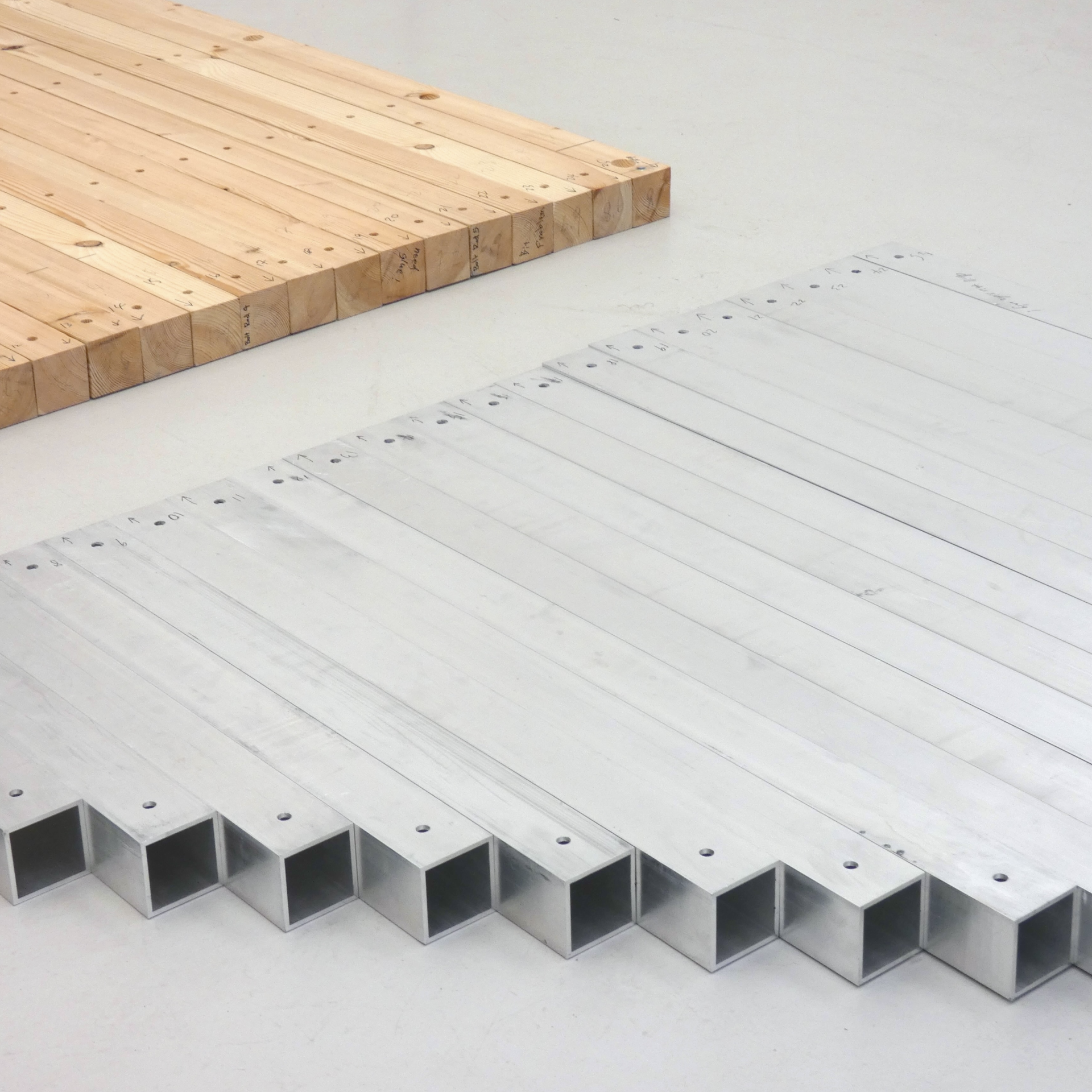
Photo © Hsi-Nong Huang.
Routes to longing with Hsi-Nong Huang is an experimental essay by Cecilia Vilela, commissioned by New Art Projects in light of the exhibition Hsi-Nong Huang: Ships Passing, 4 May–13 July 2024, London, UK.www.newartprojects.com/events/hsi-nong-huang-ships-passing
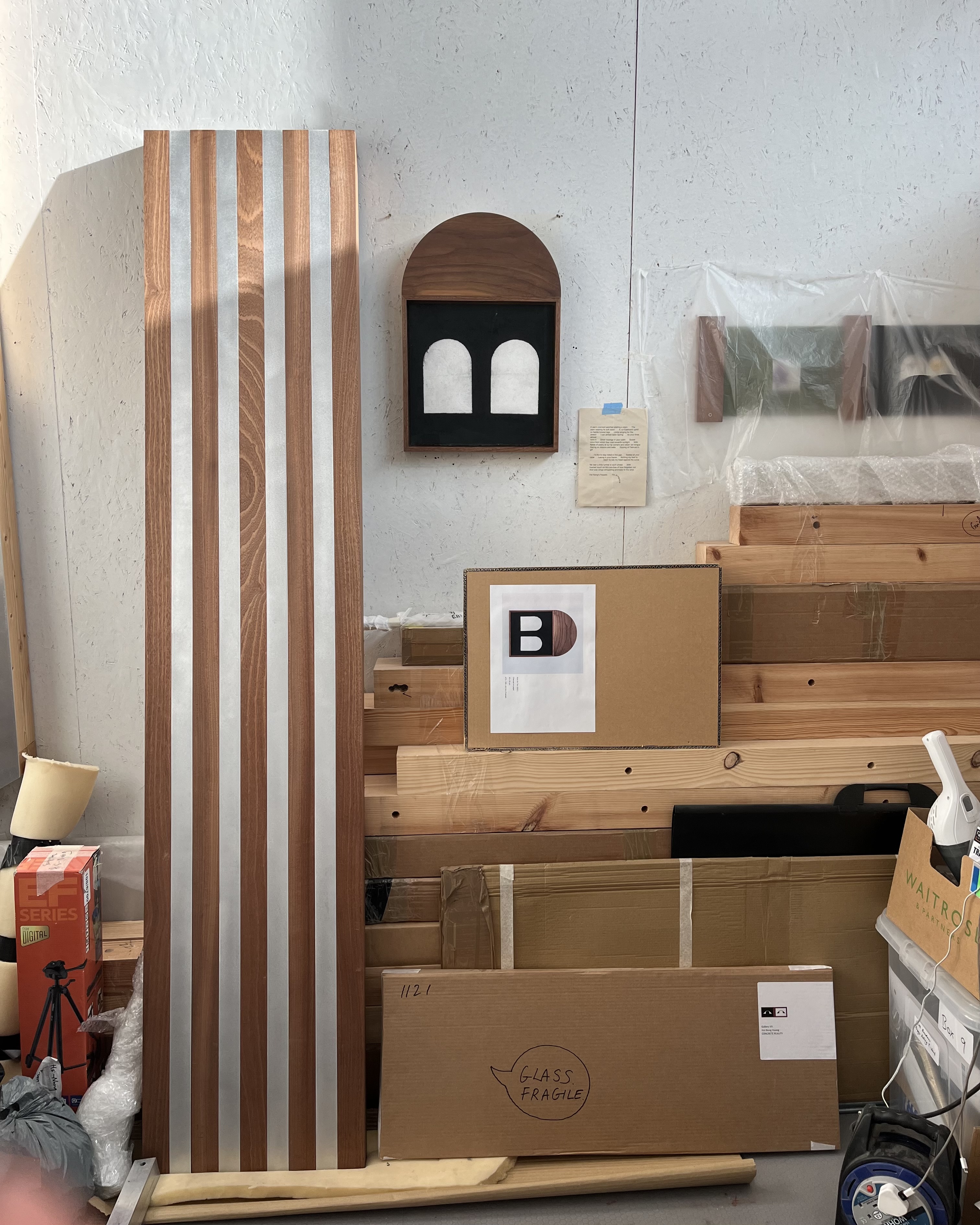
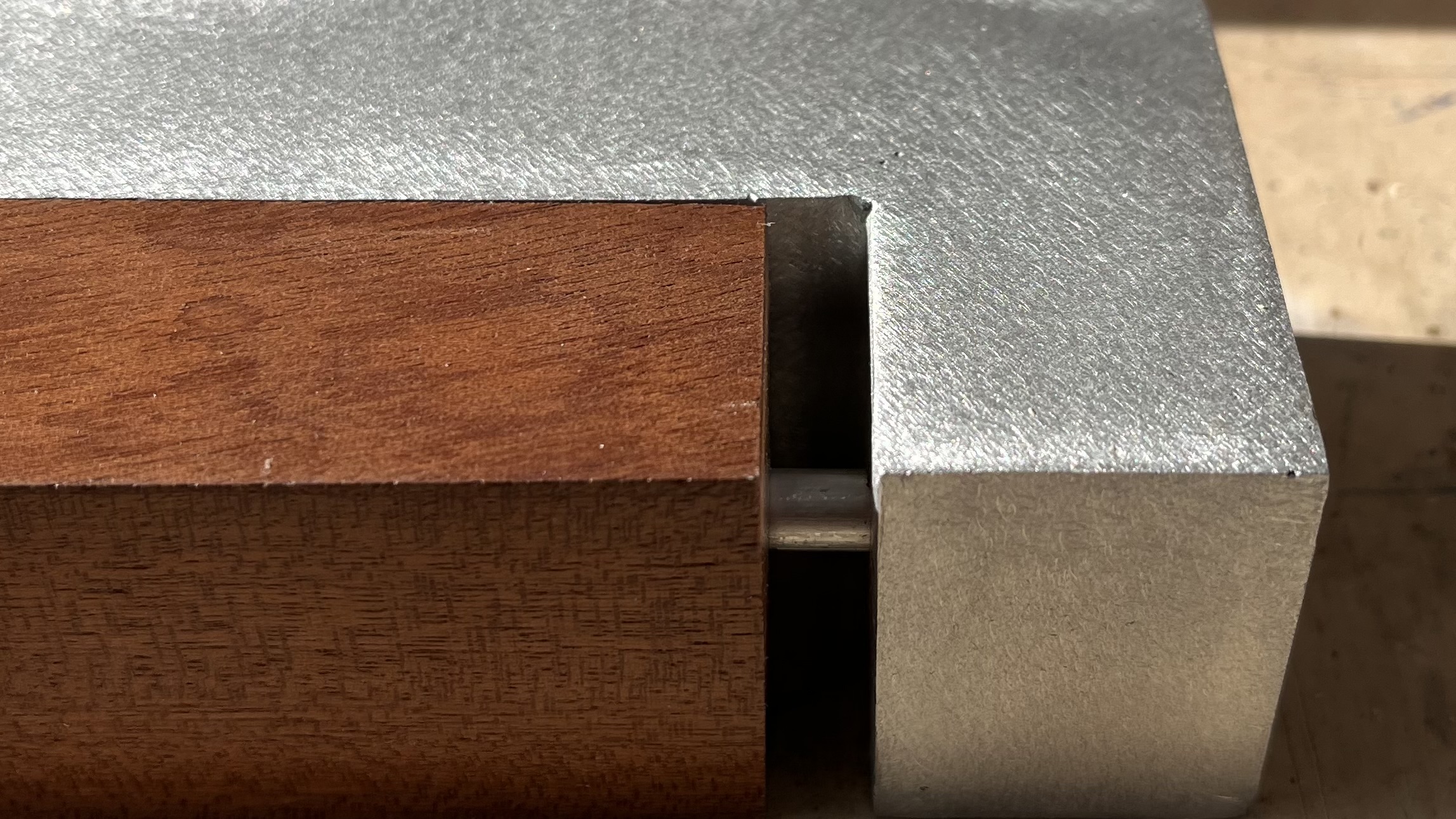
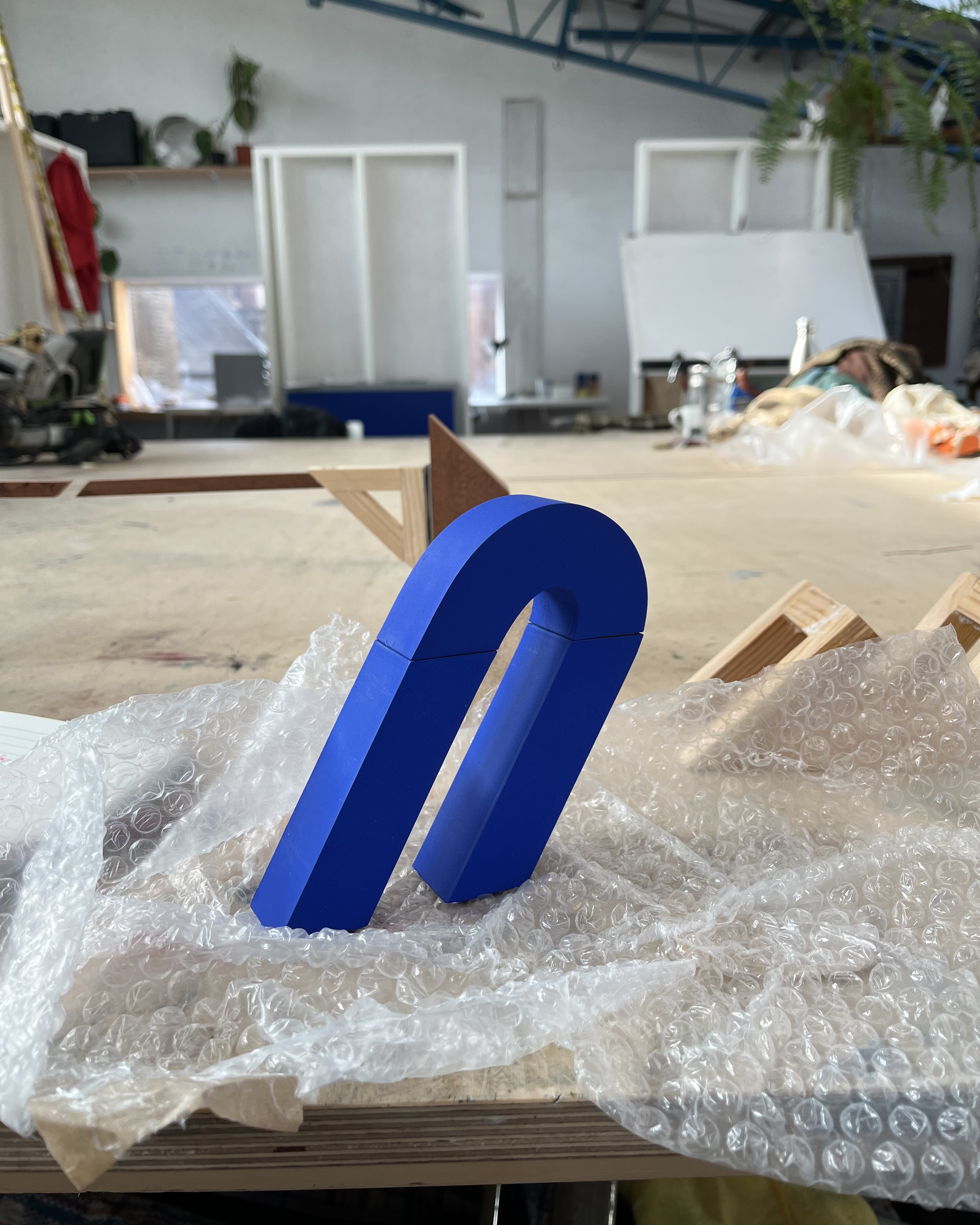
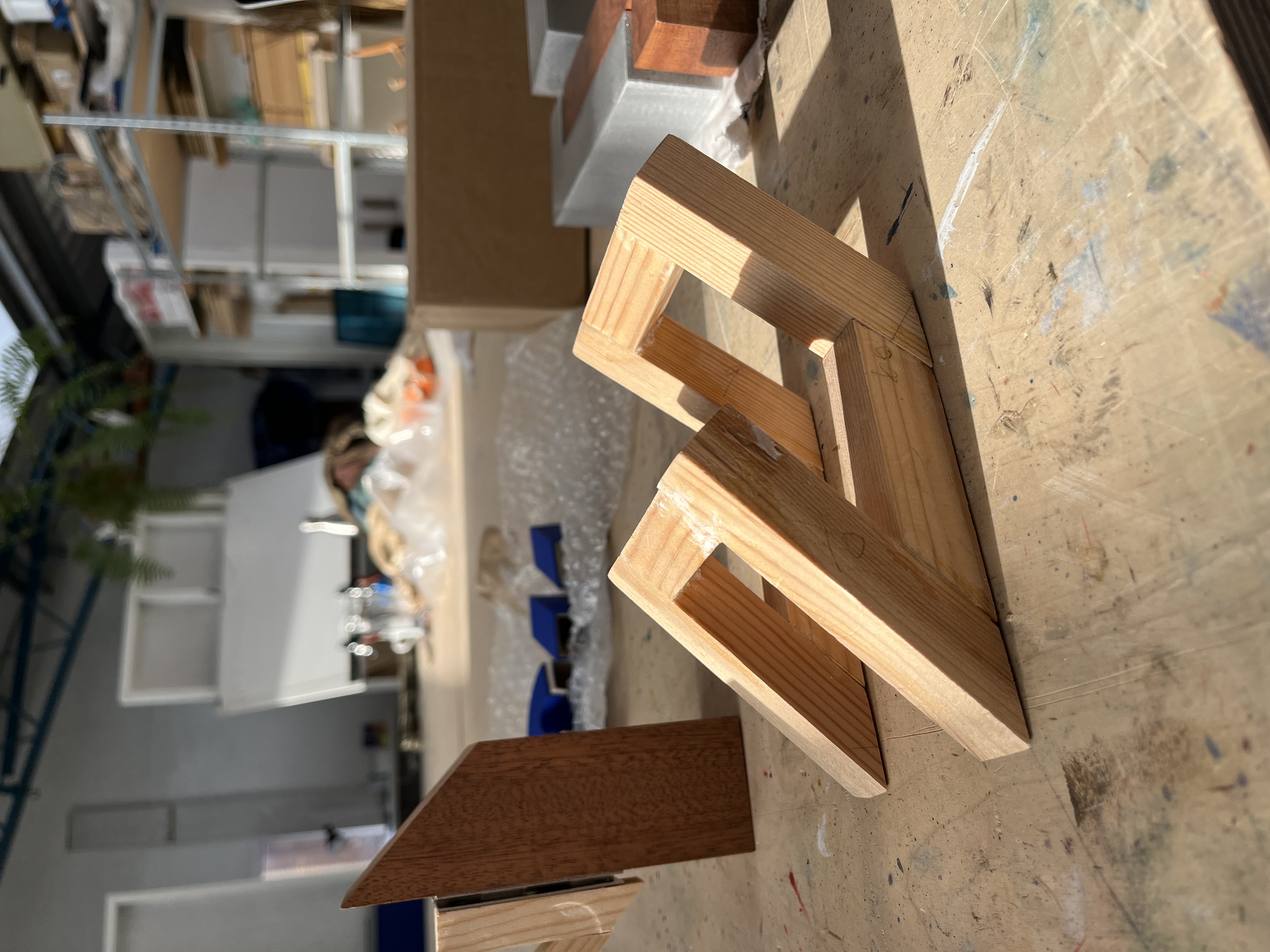


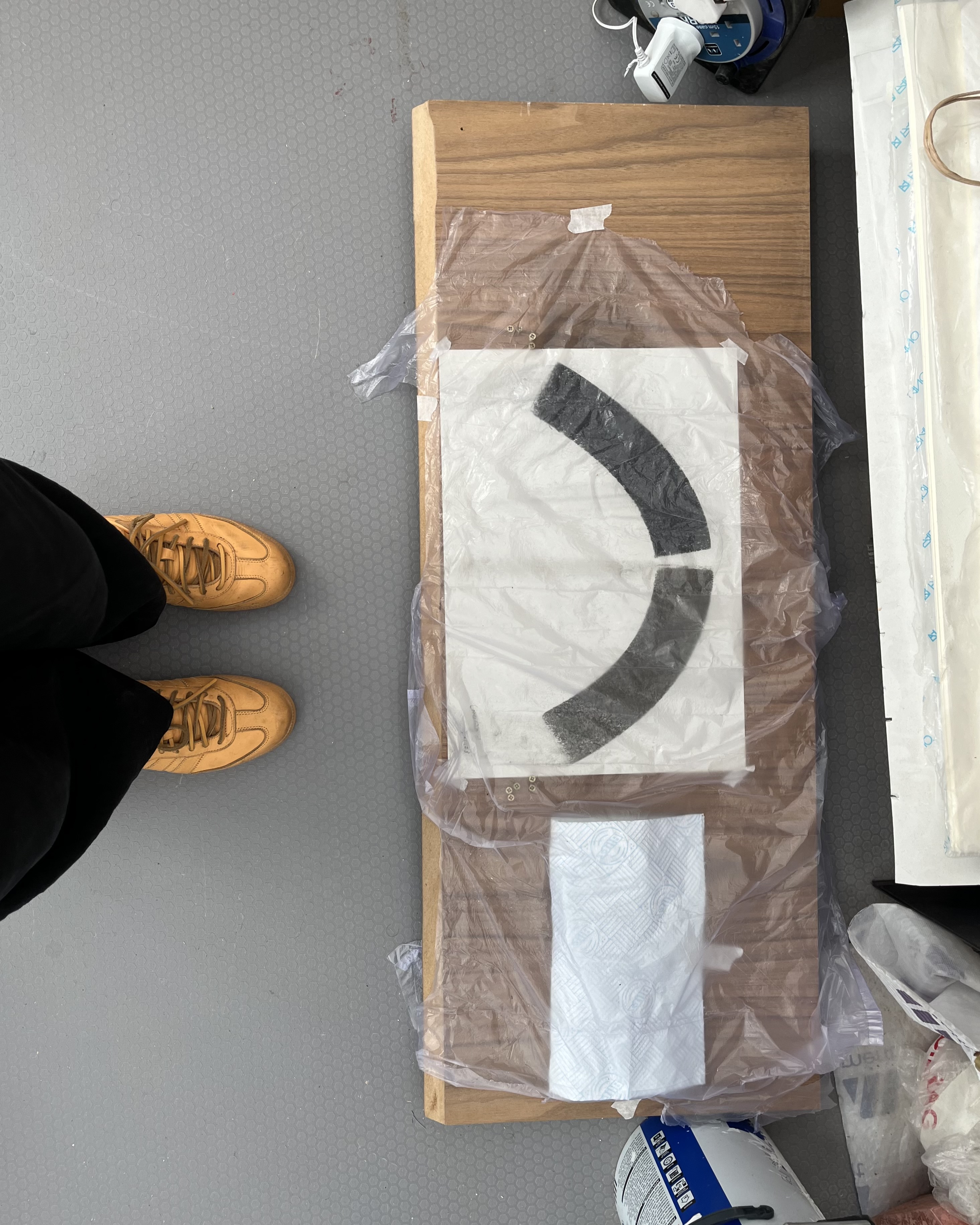
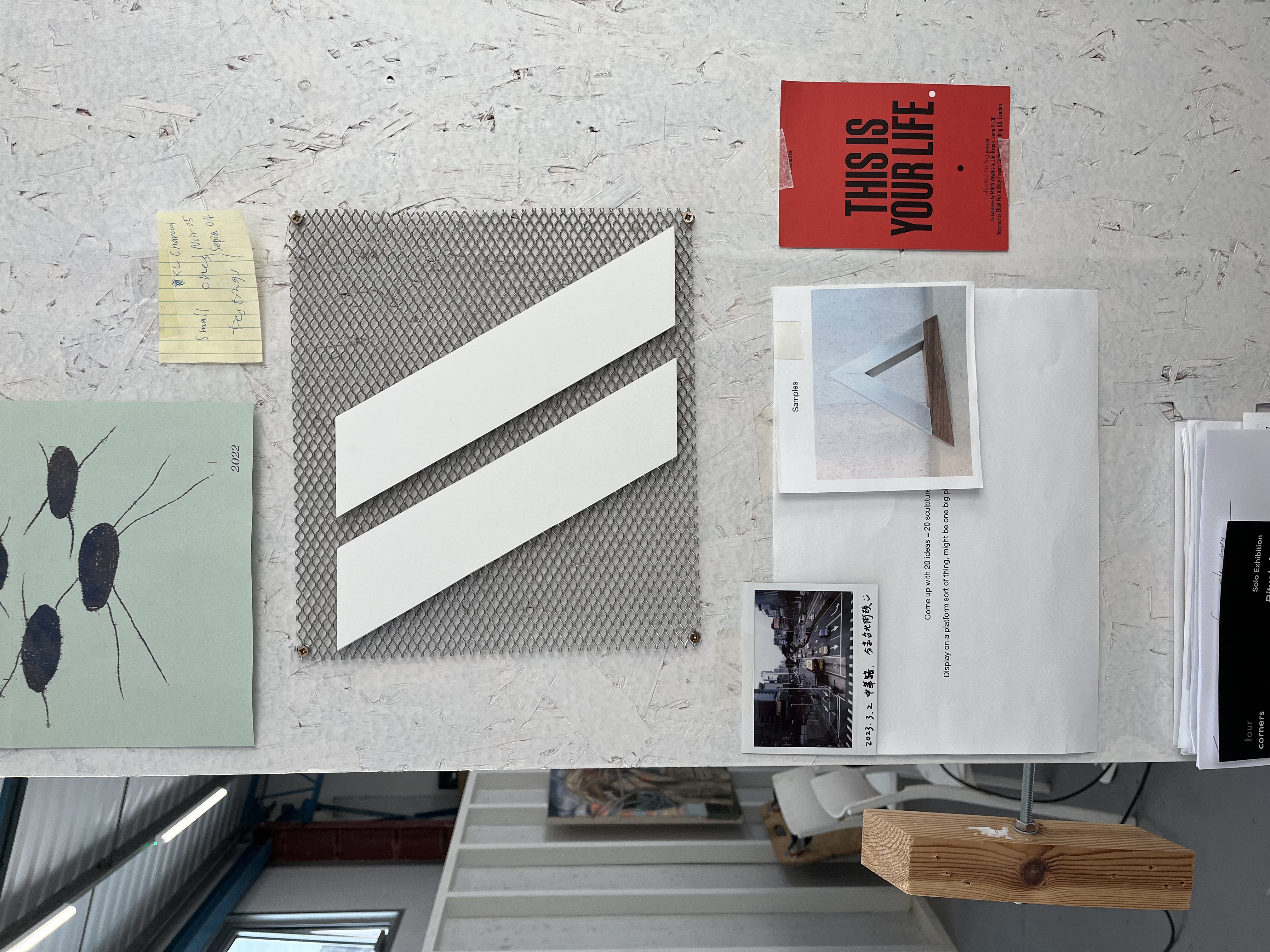
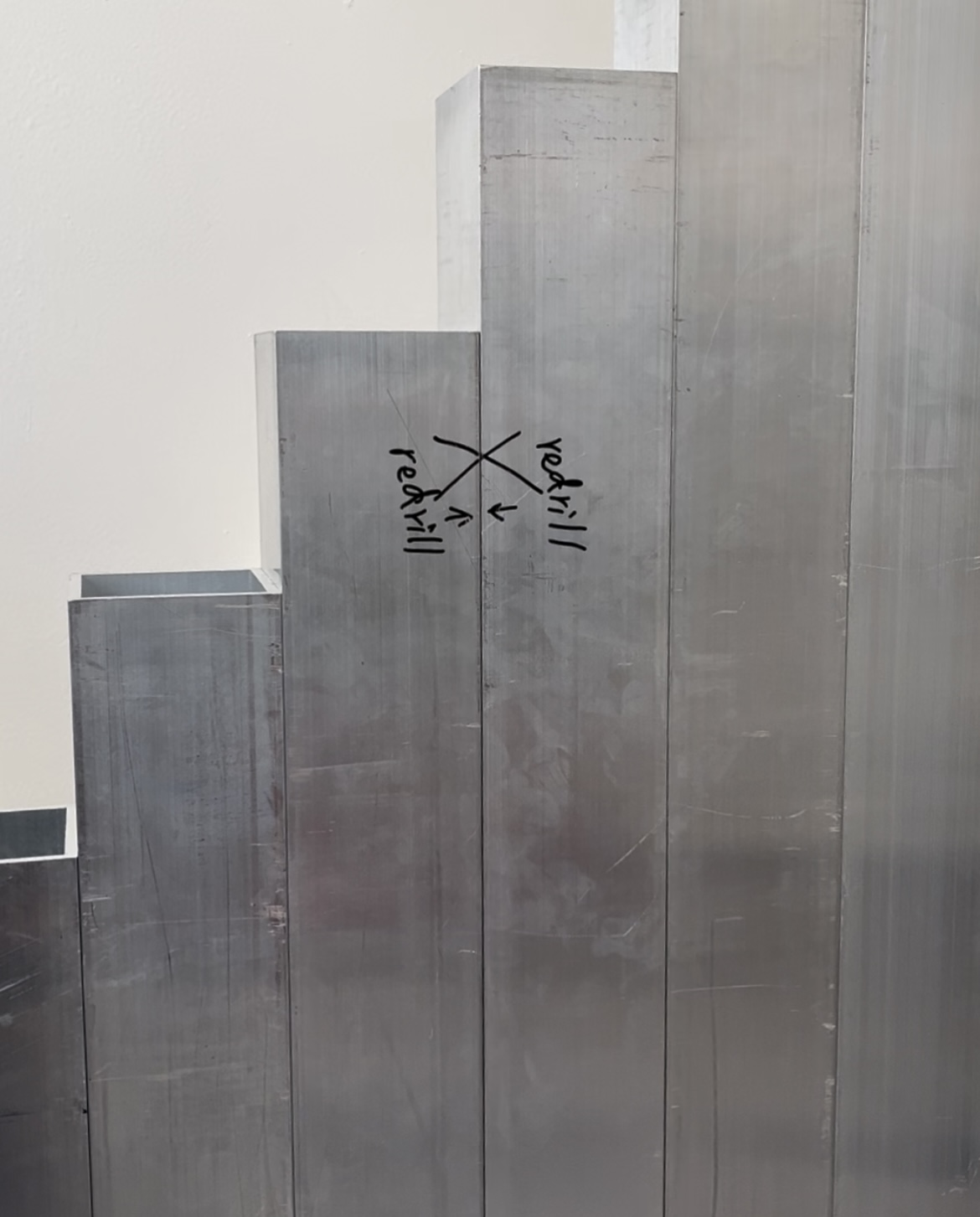

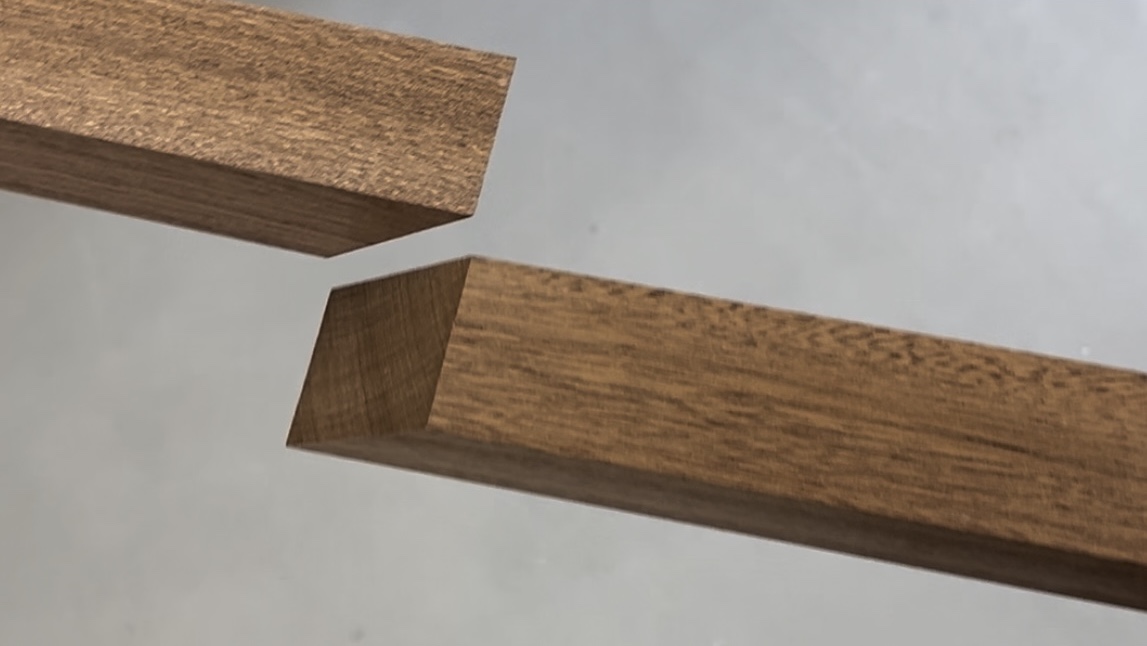
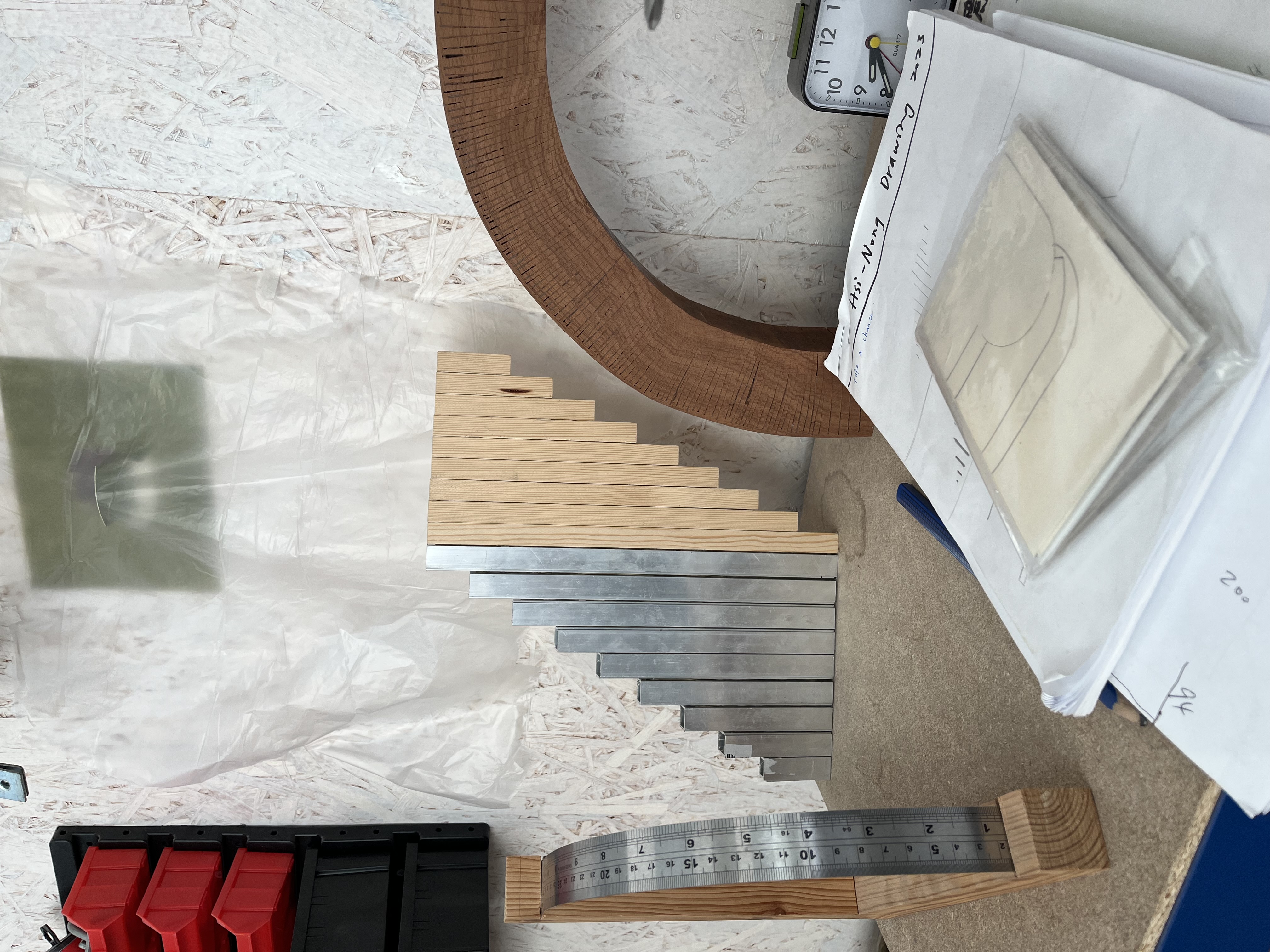


Header: Installation view of Hsi-Nong Huang: Ships Passing, at New Art Projects, London, UK. Photo by Jack Elliot Edwards. Picture gallery: records from studio visit, photos by Cecilia Vilela unless otherwise stated.